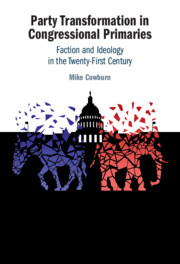References
Published online by Cambridge University Press: 09 November 2024
- Type
- Chapter
- Information
- Party Transformation in Congressional PrimariesFaction and Ideology in the Twenty-First Century, pp. 217 - 240Publisher: Cambridge University PressPrint publication year: 2024

